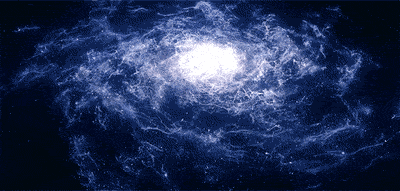There are as many as 400 billion stars in the Milky Way alone. In this sea of light, it seems inevitable that life must have evolved on some alien planets. Putting an actual estimate on this probability can be daunting, though. As technology evolves and with astronomical findings like the discovery of over 2,000 extraterrestrial planets since 1988, scientists are able to make “intelligent guesses” with more confidence. According to a new version of a famous equation that tries to pin a number on intelligent life in the Universe, it’s highly unlikely that advanced life was confined to Earth.

The equation in question was first proposed in 1961 by Frank Drake. Known as ‘Drake’s equation’, the mathematical relationship describes the variables involved in fostering intelligent life. In its initial form, the equation looks as follows:
N = R* x fp x ne x fe x fi x fc x L.
N is the total number of civilizations in the Milky Way, R is the rate of star formation, fp describes how many of those new stars actually have planets, ne is the number of planets in the solar systems which might support life, fe is related to the number of planets where life is present, fi is a fraction that describes life-bearing planets and finally fc is the variable that relates those planets where civilization reached the necessary technological prowess to signal its existence in space.
This famous equation has been used by institutes around the world like SETI for many years to gauge the probability of finding alien life.

Decades later, Adam Frank and Woodruff Sullivan, two astronomers at University of Rochester, have come up with a simplified version of Drake’s equation that takes into account data like the number of exoplanets discovered, as well as the number of planetless stars. Most importantly, space telescopes like Kepler have shown that some planets orbit their parent stars in a Goldilocks area where conditions allow water to flow in a liquid state at its surface. We also know which planets, out of the thousands we’ve set our eyes upon, are rocky, gaseous, have an atmosphere, and so on.
“We call it extraterrestrial archaeology,” said Frank
The revised equation which contains only three terms is also different in the sense it answers a similar, but different question. Drake’s equation tries to guess how many intelligent alien species are there in the Universe at this very moment. The new equation seeks to learn “how many ancient civilizations have existed since the birth of the Universe 13.7 billion years ago?”
A = Nast * fbt
Here A is the number of technologically capable species which have existed since the dawn of the Universe; Nast refers to the “number of habitable planets in a given volume of the universe,” while Nfbt is the “likelihood of a technological species arising on one of these planets.”
“Somewhere out there, nature, through evolution and its processes, has determined what the probability of a given planet is going to be for the intelligent life to form,” Frank said. “We don’t know what that is, but nature knows. And we figured out how low that probability would have to be” for us to be the only intelligent life in the history of the universe.
The findings published in Astrobiology suggest that there’s a one to 10 billion trillion chance humanity is the only civilization ever.
“If you asked a pessimist 20 years ago how bad they thought the odds were, they’d say a 1 in 10 billion chance that there’s intelligent life on another planet,” Frank added. “According to our results, that leaves a trillion times a species has gone through evolution, become self-conscious and started to build technology. A trillion civilizations.”
Our civilization has been around for only 10,000 years. It would be indeed naive to think that in the eons elapsed thus far there weren’t any other. It’s also highly likely that many of these civilizations perished. In fact, the Fermi Paradox — we’ve yet to discover a single trace of alien life, despite the extremely high probability that it exists somewhere — might be explained by the fact that all civilizations have destroyed themselves. In the last 100 years alone, humanity has come close in multiple instances from wiping itself out. Today, the biggest threat is climate change. Maybe, if we can fix our planet, we’d be worthy enough to get an audience from an alien civilization.






